The NDSS is administered by Diabetes Australia
Menu
- /
- Blood glucose monitoring
Checking your blood glucose levels can help you manage your diabetes. You’ll be able to see what makes your numbers go ‘up’ or ‘down’, such as eating different foods, taking your insulin, being active or when you’re unwell. Learn about how and when to check your blood glucose level.
Checking your blood glucose level (or blood glucose monitoring) is a helpful way to see how much glucose is in your blood at a point in time.
Regular monitoring shows you the effects of food, activity, insulin and illness on your blood glucose levels.
This helps you make choices about food, physical activity and insulin to keep your blood glucose levels within your target range.
Understanding your blood glucose levels also helps you see any patterns or changes to discuss with your diabetes health professional.
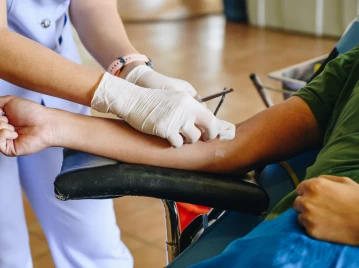
By now, you’ve probably heard about the HbA1c test. The HbA1c is a simple blood test that shows your average blood glucose levels over the past 10-12 weeks. It helps your diabetes health professionals work with you to find the best way to manage your diabetes.
For many people, the target HbA1c is 53 mmol/mol (7%) or lower. But everyone is different, so your ideal HbA1c might be different too. Make sure to talk with your doctor or diabetes health professionals about what’s right for you.
If your HbA1c level is above your target, it means there has been too much glucose in your blood (on average). If it stays above target, then you’re at greater risk of getting health problems in the future.
You should get this test done every 10-12 weeks. But sometimes you might need to have the HbA1c test less often. Schedule it with your doctor so you can stay on top of your diabetes.
Talk to your diabetes health professionals about the best target range for your blood glucose levels and your HbA1c test. They’ll help you work out right targets for you.
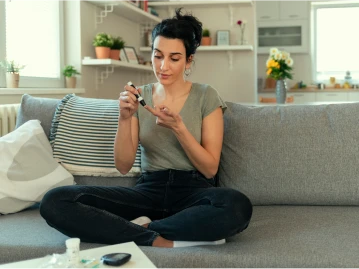
You can do this check yourself. This is also called self-monitoring your blood glucose levels.This checks the glucose levels in your blood at a single point in time.
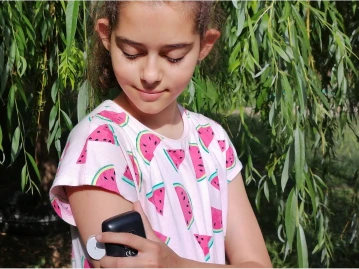
You’ll need a blood glucose meter, blood glucose strips, a lancing device (finger pricker) and a lancet (finger pricking needle).
Your diabetes health professionals or local diabetes organisation may have supplied you with a blood glucose meter. You can get NDSS subsidised blood glucose strips from a NDSS Access Point, usually your local community pharmacy.
You can also buy blood glucose meters, finger pickers, needles and sharps containers from your pharmacy. A diabetes educator can help you choose a blood glucose meter that suits your needs and show you how to use it.
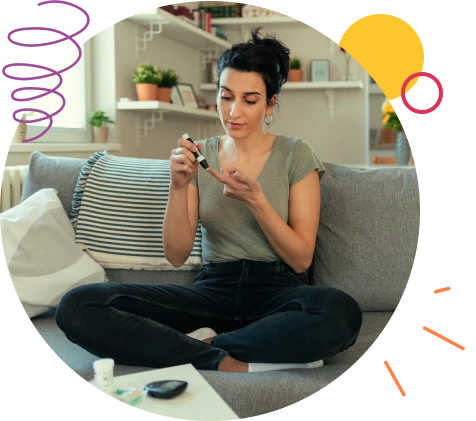
Place a blood glucose strip into the meter. Make sure you have inserted the right end into the meter and it is fully inserted. This will turn the meter on.
Take the needle out of the finger pricker and dispose of it in a sharps container.
The blood glucose reading on your meter will be displayed in mmol/L.
Think about the result and if you need to make any changes to how you manage your diabetes.
All blood glucose meters store the reading in a memory. So, it’s important to be sure the time and date settings on the meter are correct. This allows you and your diabetes health professionals to review your readings and find your daily blood glucose patterns. If you prefer, you can write down your readings in a record book.
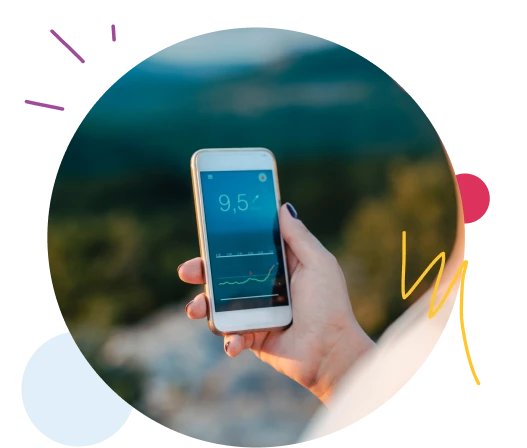
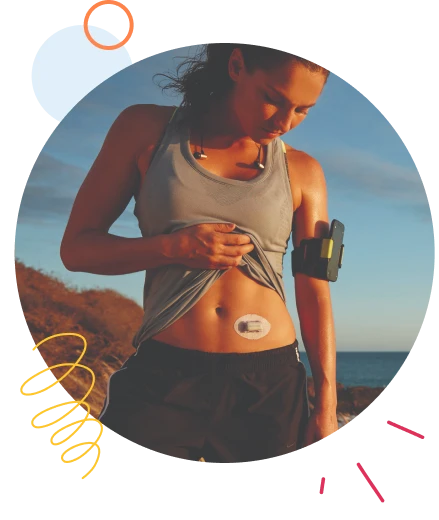
A finger prick check with a blood glucose meter shows your blood glucose levels at a single point in time.
Continuous glucose monitoring (CGM) and flash glucose monitoring (Flash GM) measures your glucose levels continuously throughout the day or night. These devices measure glucose in the fluid between your cells instead of in the blood. Therefore, the readings often are not identical to a finger prick blood glucose check, but they’re similar.
Flash GM and CGM keep track of glucose levels all day and night without pricking your finger. Flash GM and CGM devices make it easy to share alerts and readings with parents and diabetes health professionals.
Using a Flash GM or CGM device can help with type 1 diabetes in many ways. Here are some of the benefits:
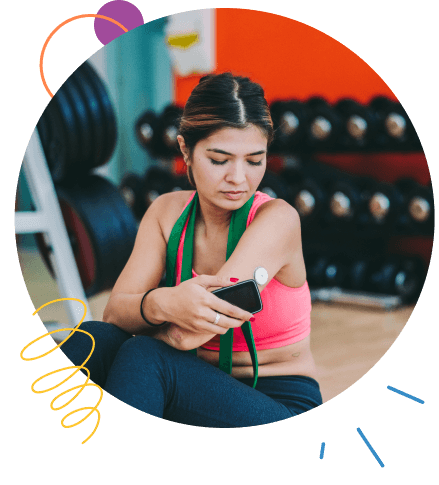
A Flash GM device is a small wearable device.
In Australia, the FreeStyle Libre 2 is a Flash GM device. The FreeStyle Libre 2 can be programmed to alert you if your glucose levels are outside your target range. It also has arrows to show whether your glucose level is rising, falling or staying steady.
The sensor data is sent continuously to a compatible smartphone or smart device such as a smartwatch with the FreeStyle LibreLink 2.0 application (app). This feature is not supported by the FreeStyle Libre 2 Reader where manual scanning is required.
But it can’t send readings to an insulin pump

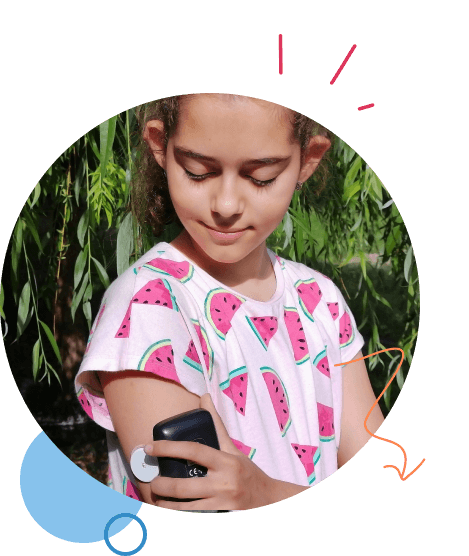
With a CGM device, your newest glucose levels shows automatically on a smart device or phone. With a Flash GM device you need wave your reader or smartphone over the sensor to scan to see your blood glucose readings.
Some prefer to use Flash GM device instead of CGM device. But, unlike Flash GM, some CGM devices can “talk” to an insulin pump. This is important if you are going to use a special insulin pump system called a “hybrid closed loop“.
Remember that no “one size fits all”. Your doctor and diabetes educator will help you decide if a CGM or a Flash GM device is right for you. They will work with you to choose the right device and how to best use it to suit your life and diabetes management.
Flash GM and CGM devices are great tools to help you manage your diabetes – but you still need to be in the driver’s seat. Work with your diabetes health professionals to get the best out of using your device.
This is available for all people living with type 1 diabetes. But children and young people under the age of 21 can access them at no cost from their local pharmacy.
Call the NDSS Helpline 1800 637 700 to find out more.
How often and when to check blood glucose levels is different for each person. Your diabetes health professionals will help set your personal schedule for when it’s best for you to check. Most young people have to check at least 6 times every day.
Common times to check are before eating and injecting insulin, when fasting and 2 hours after the start of a meal
Before bed and sometimes during the night
If you have been socialising, like going to a party
Before, sometimes during, and after exercising
Before driving and every 2 hours during long driving trips
If you’re feeling unwell
If you feel like your blood glucose level is below or above your target range
Other times as worked out with your diabetes health professionals as part of your diabetes management plan
When you wake up
4-7 mmol/L
Before meals at other times of day
4-7 mmol/L
2 hours after meals
5-10 mmol/L